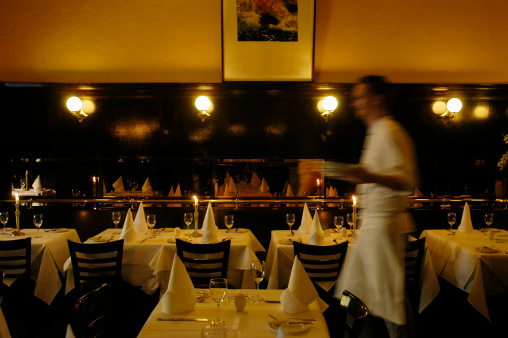Best Asian Restaurant Islamabad: Experience Flavors from Throughout Asia
Savor Authentic Eastern Food With a Pan-Asian Twist for a Culinary Experience
Starting a culinary journey through authentic Oriental food, enhanced with a Pan-Asian spin, offers a special opportunity to check out the rich tapestry of tastes that define the region's varied culinary practices. This experience welcomes you to savor the splendid balance of preferences-- pleasant, salty, spicy, and sour-- integrated by aromatic herbs and spices. Think of the cutting-edge blend of Thai curry and ramen or the unanticipated pleasure of sushi burritos. As you contemplate these luring meals, take into consideration the social stories and historical influences that shape them, each bite using a story waiting to be found.

Checking Out Pan-Asian Flavors
In the realm of global gastronomy, Pan-Asian cuisine attracts attention for its remarkable variety and the harmonious interplay of flavors from numerous Oriental societies. This cooking strategy commemorates the distinct active ingredients and abundant practices found across the continent, developing a tapestry of preferences that is both rewarding and intriguing. Trick to Pan-Asian food is its capability to balance different tastes-- pleasant, salted, spicy, and sour-- while highlighting the quality and top quality of each ingredient.
From the umami-rich soy sauce of Japan to the intense chili peppers of Thailand, Pan-Asian food uses a substantial combination of tastes. These components are typically integrated in inventive methods, improving dishes with layers of complexity. For example, the usage of aromatic herbs such as lemongrass and cilantro, common in Vietnamese and Thai cuisine, adds a rejuvenating illumination to recipes, while the unification of coconut milk supplies a luscious, abundant texture.
The focus on fresh produce and aromatic flavors makes sure that each dish is not only a banquet for the taste however also for the detects. Pan-Asian food welcomes diners to start a cooking trip, checking out the huge and varied landscapes of Eastern gastronomy with every bite.
Blend Recipes to Try
While Pan-Asian food is commemorated for its traditional flavors, the modern-day cooking landscape is progressively accepting combination dishes that blend these classic aspects with impacts from various other areas. This cutting-edge method not just honors the abundant heritage of Oriental cooking arts but likewise introduces unique preference experiences that interest modern palates.
An archetype of such a fusion dish is the Korean-Mexican taco, where marinaded bulgogi beef is covered in a cozy tortilla, covered with kimchi and a hot gochujang-infused salsa. This mix marries the vibrant, tasty tastes of Korea with the dynamic, fresh aspects of Mexican cuisine. In a similar way, sushi burritos have actually gained popularity, amalgamating the delicate creativity of Japanese sushi with the hearty, hand-held ease of a burrito, usually including combination ingredients like tempura shrimp and avocado with a drizzle of wasabi mayo.
An additional noteworthy dish is Thai curry ramen, which instills the luscious, aromatic spices of Thai curry into the comforting broth of standard Japanese ramen, developing an unified blend that entices the detects. These fusion meals expand beyond mere novelty; they represent a cooking discussion in between societies, encouraging exploration and development on the planet of Pan-Asian food.
Crucial Ingredients and Seasonings
To truly appreciate Pan-Asian cuisine, one need to comprehend the necessary active ingredients and flavors that create its structure. This diverse cooking style attracts from an abundant tapestry of Eastern practices, utilizing an unified mix of flavors and structures.
Fragrant elements are essential, with lemongrass, garlic, and ginger being common across various Pan-Asian dishes. These components provide a fragrant base that boosts the complexity of flavors. Spices such as celebrity anise, cardamom, and cinnamon introduce heat and personality, echoing influences from regions like China and India.

Cooking Strategies and Tips
Mastering the art of Pan-Asian cuisine calls for familiarity with its unique cooking strategies, each adding to the vivid tapestry of tastes this culinary tradition is celebrated for. Central to these approaches is the stir-fry, a rapid food preparation technique that maintains the nutritional integrity and brilliant colors of ingredients. Making use of a frying pan, the stir-fry approach enables also warmth circulation, necessary for achieving the particular texture and flavor equilibrium of Pan-Asian meals.
Another essential method is steaming, specifically widespread in Chinese food. This mild method keeps the natural tastes and nutrients of components, making it optimal for fish and shellfish and veggies. Dumplings, a cherished staple, commonly gain from steaming, causing soft, succulent structures.
Barbecuing, likewise important, passes on great smoky midsts to meals such as Oriental bulgogi or Japanese yakitori (Best ambiance restaurants Islamabad). This method often involves seasoning ingredients, allowing tastes to pass through deeply prior to cooking over an open fire or warm plate
Finally, mastering the art of stabilizing tastes-- wonderful, sour, salty, bitter, and umami-- is vital. Effectively layering these aspects can boost a dish from common to amazing, offering a complex and satisfying culinary experience that symbolizes the essence of Pan-Asian food.
Eating Experiences Worldwide
Across the world, Pan-Asian food uses an unrivaled dining experience, commemorated for its rich tapestry of tastes and vibrant discussions. This culinary phenomenon has actually transcended cultural borders, catching the hearts and tastes buds of food enthusiasts worldwide. In cosmopolitan cities fresh York, London, and Sydney, Pan-Asian restaurants click here for info act as melting pots where cooking traditions from Thailand, Japan, China, and past merge, providing diners with a diverse mix of meals that highlight the area's variety.
The international appeal of Pan-Asian food exists in its ability to offer both authenticity and innovation. Chefs skillfully wed traditional components such as lemongrass, soy sauce, and miso with modern strategies, leading to meals that are both acquainted and refreshingly new. This fusion allows restaurants to start a culinary journey that values heritage while embracing modernity.
Moreover, dining experiences are boosted through attentively developed atmospheres that mirror the ethos of Pan-Asian aesthetic appeals. From minimal Japanese-inspired insides to vivid Thai-themed areas, each dining establishment offers a special setting that enhances the culinary offerings. Therefore, customers are not merely consuming a dish however partaking in a social experience, making Pan-Asian dining a really global sensation.
Conclusion
The exploration of Pan-Asian cuisine provides a profound understanding of the complex interplay of tastes and cooking find out practices throughout Asia. By accepting combination dishes such as Thai curry ramen and sushi burritos, the culinary journey not only highlights the versatility of traditional ingredients but likewise showcases ingenious modern strategies. This gastronomic adventure, improved by necessary seasonings and cooking approaches, provides a distinct chance to appreciate the multiculturalism and culinary virtuosity that define Pan-Asian food on an international scale.
Getting started on a culinary trip via genuine Asian cuisine, improved with a Pan-Asian spin, uses an one-of-a-kind opportunity to discover the rich tapestry of tastes that define the region's varied culinary practices.In the world of international gastronomy, Pan-Asian food stands out for its exceptional variety and the harmonious interplay of tastes from various Asian societies. Trick to Pan-Asian cuisine is its capacity to balance different flavors-- sweet, salty, spicy, and sour-- while highlighting the freshness and top quality of each component.
